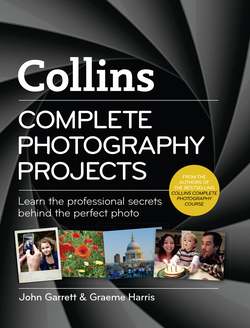Читать книгу Collins Complete Photography Projects - John Garrett - Страница 45
THE GREAT OUTDOORS
ОглавлениеLandscape is a huge subject, and although it’s one of the most popular areas for photographers you may find it the most difficult in the book – partly because you have no control over the weather and the elements in the landscape, but also because of that popularity.
In these days of easy-to-use digital cameras, photo-sharing websites and microstock agencies that accept work from amateurs, the proliferation of photographic images has been staggering. The result is that most people now look at pictures with a more sophisticated eye, and a pleasant landscape shot among thousands competing for attention isn’t enough to satisfy a photographer who wants to be truly creative.
So this chapter is about learning ways to make your pictures stand out from the everyday shots. We shall demonstrate how landscapes are dramatically affected by changes in the light, and how you can use depth of field and filters to make your images powerful. Most importantly, we shall teach you how to isolate beautiful pictures from the great outdoors. When we first start out on our landscape journey, the majority of us take wide scenic views; it’s only when we learn to focus on sections of those views that our images start to become meaningful.
As with anything you want to shoot, understanding how to make the most of what’s in front of your lens will improve your pictures by leaps and bounds. This chapter will help you to make that big step up from just taking nice pictures of nice scenes to creating genuine photographic landscapes.
FINDING INTEREST IN FLAT LIGHT
The day was overcast and misty, so the light was flat – not at all my usual landscape light, but I decided to try out a roll of Ilford infra-red film I had with me. This cut through the haze and gave an almost etched look that amazed me, given that the situation had looked so unpromising. I added a sepia tone in Lightroom to give an antique feel. For a similar look, try infra-red film, the IR setting in the menu of your camera or the infra-red preset in the Lightroom Develop module. 1/125 second at f16, 35mm, 125 ISO film. JG
USING A FILTER TO ADD PUNCH
This crazy little atomic-looking cloud drifted past when I was sitting on a beach in Brittany. I had my camera with me, wrapped in a freezer bag to keep it sand-free, and thought the cloud so cute I had to photograph it. I used a polarizing filter to darken the blue sky and make the cloud stand out. Keeping your camera with you at all times means you don’t have that awful ‘if only’ feeling when something picture-worthy crops up. 1/1000 second at f11, 180mm, 200 ISO. JG
